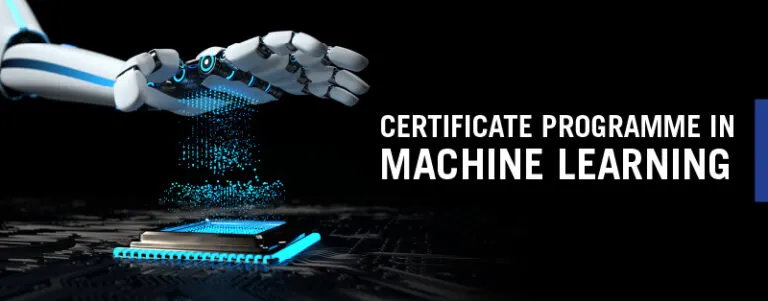What is Deep Learning? Applications and Emerging Trends in 2024

Deep learning, a subset of machine learning, has rapidly transformed the technological landscape, owing much of its progress to advancements like Nvidia’s P100 GPU. This GPU enables the training of deep learning models 65 times faster than traditional CPUs, revolutionizing how deep learning algorithms and neural networks process complex data sets. So, what is deep learning, and what will its impact be in 2024? With fast-paced changes taking place in technology, there are an array of new types of deep learning applications that can now be realized due to these speed and efficiency gains. This has made a deep learning career increasingly viable, with new avenues opening up in various industries.
Furthermore, what is deep learning vis-à-vis, and what is its significance for future innovations? The power of Nvidia’s P100 GPU exemplifies how machine learning innovations are advancing, allowing for seamless integration of diverse types of deep learning applications across fields like health care, finance, and technology. Additionally, the rapid processing power fosters the growth of neural networks, empowering deep learning trends to explore new heights. This combination of deep learning innovations and breakthroughs like Nvidia’s P100 GPU ensures that the field will continue evolving rapidly, unlocking new opportunities for both deep learning careers and technological advancements worldwide.
What is Deep Learning, and Why is it Prominent?

Let’s dive deeper into what is deep learning, and how it has impacted various industries. Deep learning is a specialized field within machine learning that utilizes artificial neural networks to process and analyze complex data sets, mimicking the human brain’s functions. Notably, neural networks and their sophisticated algorithms form the backbone of what deep learning offers, allowing for the seamless integration of various types of deep learning applications that surpass traditional algorithms’ capabilities. This has led to a surge in deep learning careers, particularly in industries such as health care, finance, and technology.
Next, let’s see what is deep learning in terms of its role in technological advancements. Its integration of neural networks and algorithms enables diverse applications that drive innovations across industries, ensuring that deep learning continues to shape the modern technological landscape.
The types of deep learning applications are diverse, ranging from Convolutional Neural Networks (CNNs) for image recognition to Recurrent Neural Networks (RNNs) for natural language processing, highlighting the field’s adaptability. Deep learning trends also underscore the growing demand for algorithms and innovations tailored to specific industry needs, further fueling the expansion of deep learning careers. Additionally, the integration of machine learning with deep learning has led to algorithms that handle large volumes of unstructured data, transforming how businesses and institutions operate.
As industries further understand what is deep learning and start leveraging its vast potential, the demand for expertise in neural networks, algorithms, and machine learning continues to rise. Furthermore, there are new types of deep learning trends that are emerging constantly. This has highlighted the need for skilled professionals who can navigate this complex domain.
ALSO READ: A Detailed Guide on the Meaning, Importance, and Future of Neural Networks
Types of Deep Learning
1. Convolutional Neural Networks (CNNs)
CNNs are a pivotal type of deep learning application, particularly in computer vision and image processing. Additionally, their layered structure allows them to process data efficiently, making them invaluable for many industries. Moreover, CNNs utilize algorithms that adapt to different tasks, making them a cornerstone of deep learning innovations in 2024.
2. Recurrent Neural Networks (RNNs)
RNNs are significant, particularly for natural language processing tasks. Their ability to handle sequential data makes them ideal for various applications. This type of deep learning is expected to play a crucial role in shaping deep learning trends, especially with advancements in algorithms.
3. Generative Adversarial Networks (GANs)
GANs are an innovative type of deep learning, comprising two neural networks that compete against each other. Consequently, this competition leads to the creation of highly realistic data, revolutionizing industries such as art, design, and entertainment. GANs essentially exemplify the creative potential of deep learning algorithms.
4. Autoencoders
Autoencoders are a fundamental type of deep learning network, designed to learn efficient data representations. This makes them instrumental in data compression and denoising tasks. In addition, their ability to extract essential features from data sets positions them as a critical component in ongoing innovations in deep learning.
5. Transformer Models
Transformer models have gained significant traction in deep learning, especially in natural language processing. Furthermore, their architecture allows for parallel processing of data, making them an efficient choice for handling large datasets. This type of deep learning is anticipated to continue shaping trends in 2024, with innovations in algorithms further enhancing their capabilities.
6. Deep Belief Networks (DBNs)
DBNs are a versatile type of deep learning network, capable of learning complex data hierarchies. Their structure allows them to function effectively in both supervised and unsupervised learning tasks. DBNs also play a vital role in various applications, contributing to deep learning trends 2024.
7. Capsule Networks
Another emerging deep learning network, capsule networks address some limitations of traditional CNNs. Additionally, they introduce new algorithms that can recognize spatial hierarchies in data, enhancing the network’s performance. Their emergence is set to influence deep learning trends in 2024.
8. Memory-Augmented Neural Networks
These networks incorporate an external memory component, making them highly effective for tasks requiring extensive data storage and retrieval. This is crucial for innovations in deep learning, particularly in sectors such as health care and finance.
9. Attention Mechanisms
Attention mechanisms are often incorporated into various types of deep learning networks, allowing for selective focus on specific parts of data. Furthermore, their integration has led to advancements in neural networks, especially in tasks involving sequence-to-sequence models.
10. Self-Organizing Maps
Self-organizing maps are a type of unsupervised learning network that helps visualize high-dimensional data. Moreover, their clustering capabilities contribute to a range of deep learning applications, including market segmentation and image recognition. This type of deep learning is set to continue contributing to deep learning trends 2024.
ALSO READ: Deep Reinforcement Learning: What it is and How it Functions
How to Build a Career in Deep Learning?
 1. Educational Foundation
1. Educational Foundation
Building a deep learning career begins with a strong educational foundation. This includes getting degrees in computer science, data science, statistics, and related fields. Furthermore, understanding machine learning algorithms and neural networks is crucial for grasping the different types of deep learning applications.
2. Practical Experience
Gaining practical experience is essential for deep learning careers, including hands-on projects involving neural networks and algorithms. Moreover, real-world applications of deep learning innovations help build a comprehensive skill set.
3. Networking
Connecting with professionals in the field is another key aspect of building a deep learning career. Attending industry conferences and joining professional associations provides opportunities to learn about the latest deep learning trends and innovations.
4. Continuous Learning
The dynamic nature of deep learning necessitates continuous learning. This includes staying updated on new types of deep learning networks, algorithms, and techniques, as well as keeping pace with trends in 2024.
5. Portfolio Development
Finally, building a portfolio of deep learning projects showcases expertise in types of deep learning applications and innovations. A strong portfolio can help secure positions in the growing deep learning career landscape.
ALSO READ: What is Reinforcement Learning? An Essential Guide for Tech Professionals
What are the Emerging Trends in Deep Learning?
1. AI-Powered Creativity
Deep learning algorithms are enabling new forms of artistic expression. This trend has led to innovations in areas such as music composition, art generation, and content creation.
2. Edge Computing
The integration of deep learning into edge computing devices is now allowing algorithms to run directly on hardware. This trend is expected to influence types of deep learning applications that can operate efficiently on a smaller scale, expanding the reach of deep learning technologies.
3. Explainable AI
The need for transparency in AI has led to a focus on Explainable AI (XAI) within deep learning. This trend aims to demystify how neural networks and algorithms make decisions, which is crucial for building trust in deep learning applications across various industries.
4. Federated Learning
Federated learning is an emerging trend in deep learning, allowing models to learn from distributed data sets while preserving data privacy. This trend is particularly significant for industries handling sensitive information, as it combines the power of machine learning algorithms with privacy innovations.
5. AI Ethics and Regulation
The growing influence of deep learning has prompted a push for ethical guidelines and regulations. This trend is shaping how deep learning careers and applications develop, ensuring that innovations align with societal needs and values.
ALSO READ: AI Skills to Learn: Top 10 Skills to Secure Your Career in 2025
What are the Key Advancements in Neural Networks for 2024?
1. Transformer-Based Models
One key advancement in neural networks is the further development of transformer-based models. These models offer powerful algorithms for natural language processing and machine translation, significantly impacting types of deep learning applications in these fields.
2. Self-Supervised Learning
Self-supervised learning allows models to learn from unlabeled data. This approach streamlines the training process, contributing to innovations in machine learning and deep learning applications across industries.
3. Neural Architecture Search
Neural Architecture Search (NAS) has become a pivotal advancement, automating the design of neural networks. This development contributes to a range of deep learning trends in 2024 and beyond, optimizing types of deep learning networks for specific tasks.
4. Capsule Networks
Capsule networks are an emerging advancement in neural networks, addressing limitations in traditional CNNs. This innovation enhances types of deep learning applications in computer vision and object recognition, further pushing deep learning careers forward.
5. More Efficient Neural Networks
The development of more efficient neural networks, designed to consume less computational power, is a key advancement in 2024. This contributes to deep learning trends by making types of deep learning applications more accessible and scalable.
ALSO READ: Pros and Cons of Artificial Intelligence: 10 Best Ways it’s Reshaping the Future
How Can Professionals Stay Informed and Updated on the Latest in Deep Learning?
1. Online Courses
Professionals can stay updated on deep learning trends by taking online courses. These courses offer insights into what is deep learning, covering types of deep learning networks, algorithms, and emerging technologies. Understanding what deep learning is and its various facets provides valuable knowledge, allowing professionals to explore the field’s advancements. Additionally, these courses emphasize what deep learning entails, offering practical insights into how these trends shape innovations in technology.
2. Research Papers
Reading research papers is another way to stay informed on the latest deep learning innovations. Academic journals and conferences publish papers that explore new types of deep learning networks, neural networks, and algorithms. Many research papers aim to answer current and future trends in deep learning, delving into the core functionalities and potential improvements within the field.
3. Industry Conferences
Attending industry conferences is a great way to network and stay current on deep learning trends. These events often showcase new types of deep learning applications, innovations, and career opportunities, helping professionals remain relevant. Furthermore, industry conferences frequently feature discussions and sessions that address the question of what is deep learning and its impact on technology and business.
4. Blogs and Forums
Following blogs and participating in online forums dedicated to deep learning is another effective strategy. These platforms offer insights into deep learning trends, types of deep learning networks, and the latest developments in algorithms. They serve as excellent resources for anyone seeking to understand what is deep learning and how it is evolving.
5. Professional Associations
Joining professional associations dedicated to deep learning and machine learning provides access to resources that help professionals stay informed. These associations offer networking opportunities, publications, and workshops that cover deep learning careers and innovations. Membership often includes access to educational materials that further explore what is deep learning, reinforcing the foundational knowledge and latest advances in the field.
ALSO READ: Artificial Intelligence in India: 6 Career Paths for Success
Deep learning continues to revolutionize various industries, driving advancements in neural networks, algorithms, and innovations. To learn what is deep learning and stay ahead in this dynamic field, explore Emeritus’ artificial intelligence courses and machine learning courses, gaining the skills needed to excel in deep learning trends for 2024 and beyond.
Write to us at content@emeritus.org





